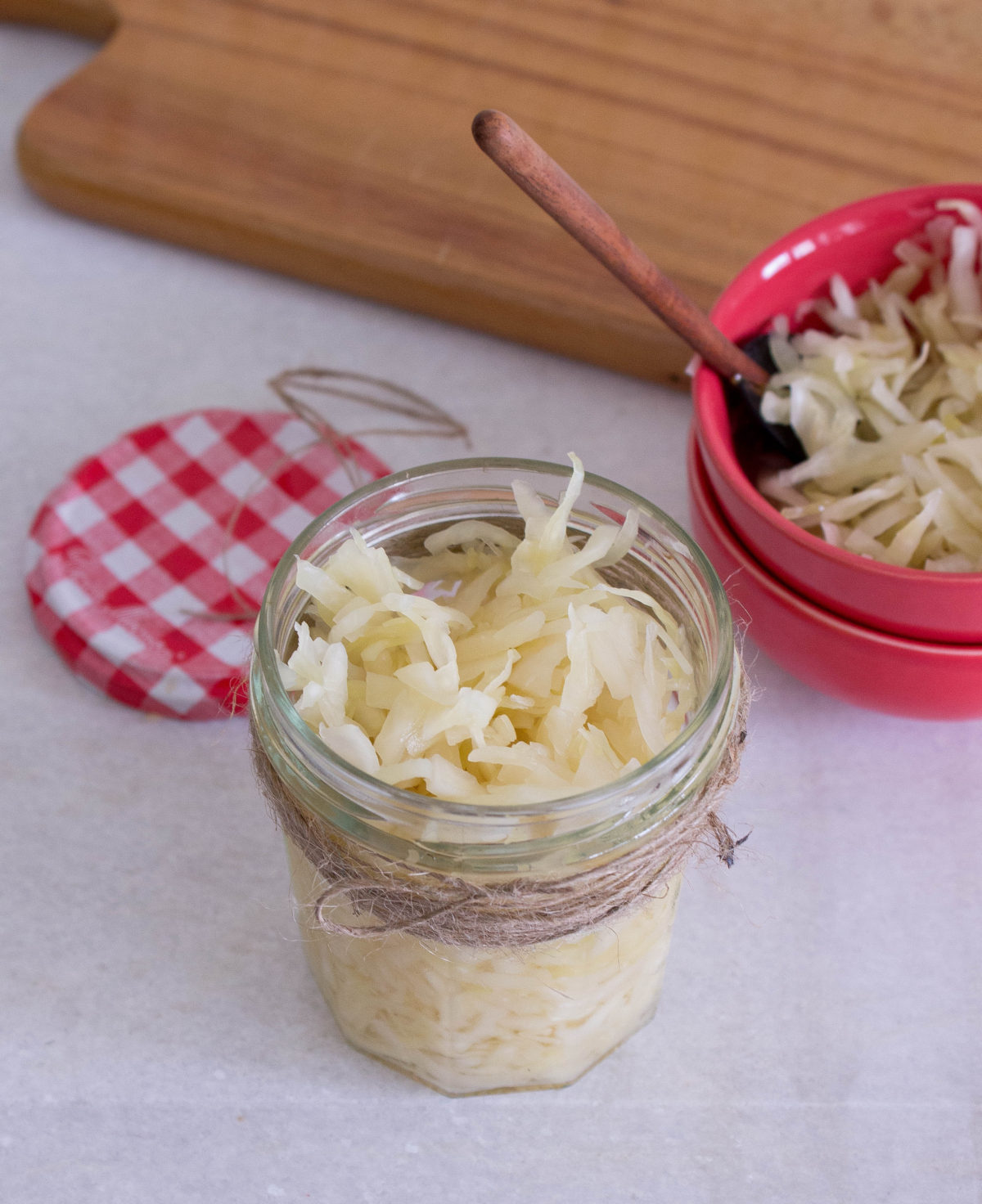
You need two ingredients to make this sauerkraut. If you think that sounds ridiculous, let me tell you that one of those ingredients is salt. Salt and cabbage. Super ridiculous.
Fermented foods excite me. The other day I was in the kitchen when I heard this strange buzzing sound. After eliminating the possibility of a beehive in my onion basket, I realized that it was the jar of kimchi that I had sitting in the corner. Upon close inspection, I noticed tiny bubbles that were sprouting from the bottom of the jar and popping up like a mini erupting volcano of kimchi juices. Kimchi alchemy.

The main difference between kimchi and sauerkraut would be the type of cabbage used, and the ingredients that get mixed into it (temperatures play a big part too, but I haven’t had any problems with making it in small batches). The former is typically made using Napa cabbage whereas sauerkraut, green cabbage. Also, while sauerkraut is just the vegetable soaked in brine, kimchi is often flavoured with chilli, garlic, and fish sauce.
Whenever vegetables are submerged in brine, lactic acid bacteria develop. These are the good guys. They act as a natural preservative and help inhibit the formation of any putrefying bacteria (aka the bad guys) in the jar. This process of lacto-fermentation is the most basic science behind making kimchi and sauerkraut.

To the uninitiated, fermentation might sound slightly intimidating. I felt that way too until I tried making my own kimchi. With just a handful of ingredients and a few simple steps, the results were amazing. Much better than I’d anticipated for a trial run. Next – grape leaves. Dolmas anyone?

- 1 medium head green cabbage (about 1.25 kg)
- 1 ½ tbsp coarse salt
- EQUIPMENT:
- 2 wide-mouth 500 ml glass jars (or one 1-litre jar)
- Cloth for covering the jar(s)
- Twine or rubber band for securing the cloth
- Clean the jars thoroughly with hot water and set aside.
- Remove the wilted outer leaves of the cabbage (don’t discard; set aside for now). Quarter, and remove the hard white core of the cabbage before slicing into thin long slivers. Transfer to a large bowl.
- Add salt to the cabbage and start working the salt into it by squeezing and massaging with your hands. Continue doing this for 5 minutes, by which time the cabbage will start to get slightly limp and wet.
- Grab handfuls of the cabbage and any of the water that may have collected at the bottom, and pack them into the sterilized jars. Once half full, make sure to tamp it down with the back of a spatula (essentially you want to pack the cabbage in without too many air pockets).
- Once the jars are filled with the cabbage, arrange the outer leaves on the surface and press down again. Cover the mouth of the jar with the cloth and fasten with the rubber band or twine.
- Leave the jar in a cool, dry area away from direct sunlight. On the first day, make sure to tamp down the cabbage with the back of a spatula every few hours. It will start to leach out more water as it sits, so you will need to do this only on the first day.
- If after 24 hours the liquid hasn’t risen to the top to submerge the cabbage, add ½ tsp of salt to ½ cup water and pour over the top.
- It might need anywhere between 3-8 days to ferment. Check it daily and make sure the cabbage stays submerged in the liquid. The longer it sits, the more funky it will get, so make sure to check regularly after the third day. I like mine after 5 days.
- Once ripe enough for you, remove the outer cabbage leaves, screw on a lid, and refrigerate. Stays good in the refrigerator for up to 2 months.
- If you are looking to make a larger batch, it might take longer to ferment. The process is the same however, so just make sure to taste it daily.
- Use your judgement: I haven’t had any problems with making sauerkraut this way, but if for whatever reason yours does not look right or smells putrid, throw it away.
*Adapted from TheKitchn



Thank you so much for mentioning the buzzing! I thought I was going insane and have not seen it mentioned anywhere! This is my first time fermenting my own kraut and it seems to be going well. Glad to know the sounds are normal though lol.